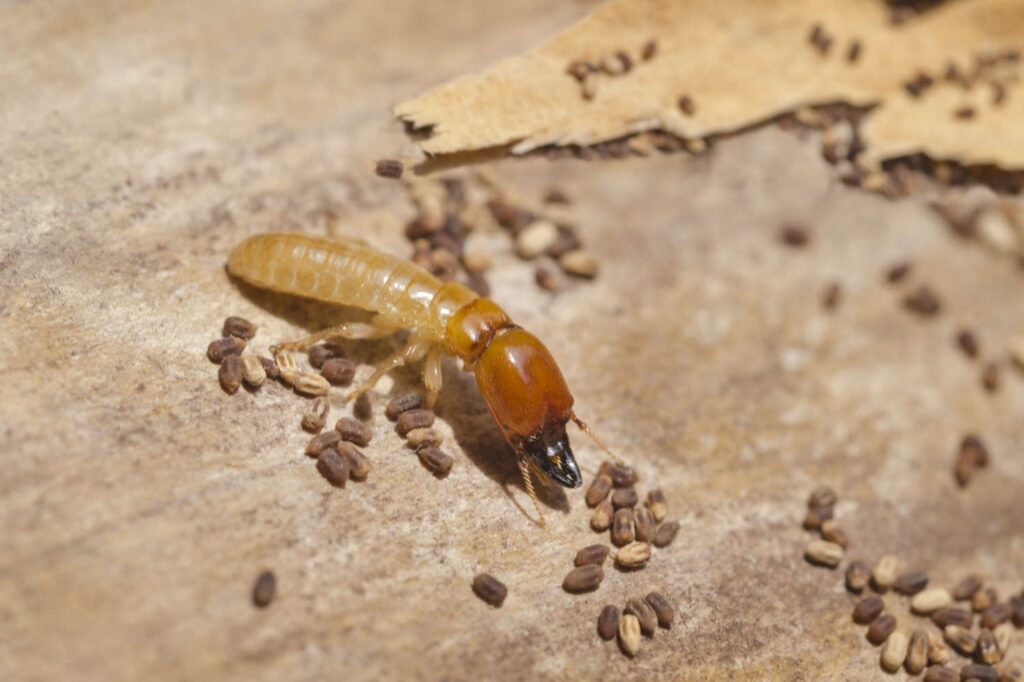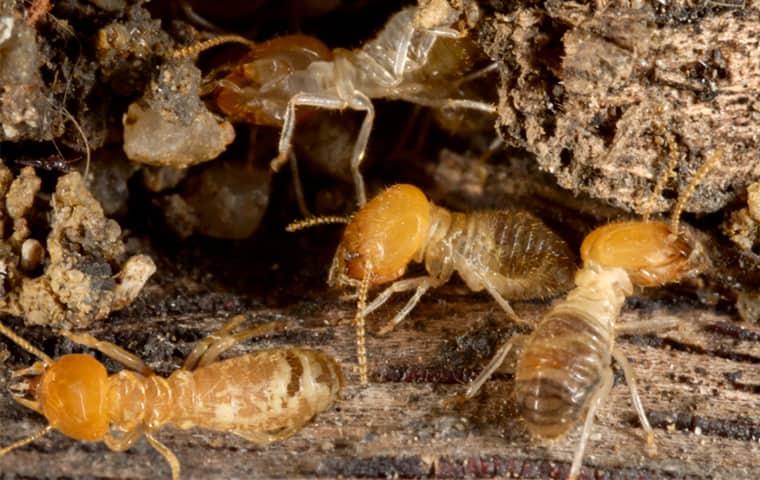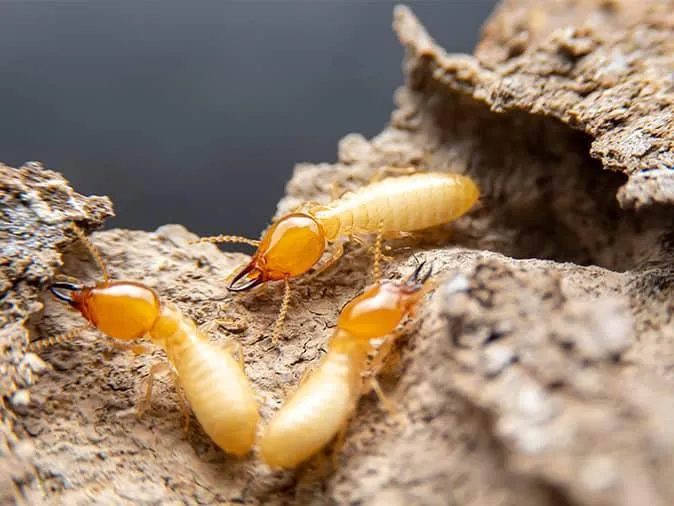Yes, termites do Sleep. They have daily sleep-wake cycles, with periods of rest to conserve energy, but their sleep patterns differ from mammals and birds.
Here’s how the sleeping pattern of termites is different from other mammals and birds.
- Termites have polyphasic sleep patterns with multiple short periods of rest throughout the day and night.
- Unlike mammals and birds, termites do not have a consolidated, continuous sleep period.
- Mammals typically have monophasic Sleep, with one long sleep episode each day.
- Birds also have various sleep patterns, including unihemispheric Sleep, but they generally have consolidated sleep periods.
- Termites’ sleep-wake cycles are more evenly distributed, allowing them to maintain constant colony activity.
- Termites’ sleep patterns are adapted to their social and nest-building behaviors, unlike the more individually oriented sleep patterns of mammals and birds.
Let’s keep a close eye on the article to learn the sleeping patterns of termites.
Do Termites Sleep: Exploring the Misconception

When it comes to termites, most people think of them as tiny, relentless eating machines that never rest. However, have you ever wondered if termites actually sleep? Let’s take a closer view to know the facts and remove the misconception.
I. Shedding Light on Common Misconceptions
Before delving into the world of termite slumber, let’s first address some common misconceptions and assumptions about these tiny insects.
Myth: Termites Never Rest
Contrary to popular belief, termites do not eat wood around the clock. They have active and inactive periods just like any other living creature.
Misconception: Termites Don’t Sleep
Many people assume that termites are perpetually awake due to their constant feeding habits. However, Sleep is a basic biological process found in different ways throughout the animal
world, supported by scientific evidence.
Now that we’ve cleared up these misconceptions let’s explore the scientific evidence that supports the existence of Sleep in termites.
Studies on Termite Behavior
Researchers have conducted extensive studies on termite behavior to uncover their sleep patterns. These studies involve observing termite colonies in controlled environments.
Evidence of Inactivity
Scientists have noted periods of inactivity among termites, during which they exhibit reduced movement and feeding. This inactivity resembles Sleep in other animals.
Sleep Cycles
Termite colonies have been found to follow distinct sleep cycles, where certain groups of termites become less active while others take over their duties.
How Does Termite Sleep Differ?
Now that we know termites do Sleep, let’s understand how their Sleep differs from that of other animals.
Group Sleep
Termites exhibit a unique form of Sleep known as “group sleep.” They sleep in shifts, ensuring that the colony is protected 24/7. This differs from many animals that sleep individually.
Minimal Physical Changes
Unlike mammals or birds, termites do not experience significant physical changes during Sleep. Their inactivity is primarily behavioral, allowing them to stay vigilant even while resting.
Conclusion
In conclusion, termites do indeed sleep, but their sleep patterns and behaviors differ from those of many other animals.
Understanding termite sleep can shed light on the complex social structures and survival strategies of these tiny but fascinating creatures. So, the next time you see a termite colony, remember that even these industrious insects need their well-deserved rest.
Termite Sleep Patterns
A. Stages and Duration of Termite Sleep
Light Sleep: Termites experience a form of light Sleep, where they remain partially active. This allows them to stay vigilant for potential threats. This stage can last for varying durations, depending on the termite’s role in the colony.
Periods of Inactivity: Termites also have periods of complete inactivity, akin to rest. These restful periods can extend for several hours, during which termites conserve energy.
Cyclic Sleep: Termite colonies follow a unique cyclic sleep pattern. Different groups of termites take turns sleeping while others remain active. This rotation ensures that the colony remains protected and productive 24/7.
B. Factors Influencing Termite Sleep
Temperature: Temperature significantly impacts termite sleep. Termites are ectothermic, meaning their body temperature depends on their environment. Cooler temperatures often lead to longer periods of inactivity as they become less active in the cold.
Colony Dynamics: The size and requirements of a termite colony can influence sleep patterns. Larger colonies may have more frequent shifts between active and resting termites to maintain essential functions.
Food Availability: The availability of food plays a role in termite sleep. When food is scarce, termites may reduce their rest periods to maximize foraging time and resource collection.
C. Variations in Sleep Patterns Among Different Termite Species
Subterranean Termites: These termites are known for their relatively extended sleep periods, which can last several hours. They are susceptible to temperature fluctuations.
Drywood Termites: Drywood termites have shorter but more frequent periods of rest, often distributed throughout the day and night.
Arid Environment Termites: In arid areas, termites often sleep during the day to save water and become more active at night when it’s cooler and more humid, as shown by scientific observations.
Conclusion
While termite sleep may differ from human Sleep, it is an essential aspect of their lives. These unique sleep patterns, influenced by temperature, colony dynamics, and food availability, ensure the survival and functionality of termite colonies.
Importance of Termite Sleep

Termites are tiny creatures that play a significant role in our ecosystems. Understanding their sleep patterns and needs is essential for ensuring their colonies’ productivity and survival.
A. Significance of Sleep for Termite Colonies
Sleep is not just a human necessity; it’s crucial for termites, too. Termites live in complex, highly organized colonies, where each member has a specific role to play. Here’s why Sleep matters for them:
Energy Conservation: Termites are tiny, but they work tirelessly. Sleep allows them to conserve energy for their demanding daily tasks, such as foraging, building, and taking care of the queen and young termites.
Communication: Termites use chemical signals to communicate with each other. Sleep helps synchronize their circadian rhythms, making their communication more effective. This coordination is vital for maintaining colony harmony and productivity.
Temperature Regulation: Termites are sensitive to temperature changes. During Sleep, they can burrow deeper into their nests to avoid extreme temperatures, ensuring the colony’s survival.
Immune System Function: Just like humans, termites need Sleep to maintain a healthy immune system. This is crucial in preventing diseases that can decimate the colony.
B. Impact of Disturbed Sleep on Termite Behavior
Research into termite sleep patterns has shown that disturbing their Sleep can have significant consequences on their behavior:
Aggression: Sleep-deprived termites become more aggressive, which can lead to infighting within the colony. This disrupts the smooth functioning of the colony and can even result in colony collapse.
Foraging Efficiency: Termites that don’t get enough sleep are less efficient at foraging for food. This can lead to food shortages within the colony, affecting its overall health and survival.
Reproductive Issues: Sleep disruption can interfere with the reproductive cycle of the queen and reduce her ability to lay eggs. This can ultimately reduce the colony’s growth and longevity.
FAQs
How do termites rest?
Termites take short breaks throughout the day, but their activity is nearly constant. They rest in their nests when not engaged in foraging, building, or other colony tasks.
Are termites nocturnal?
Termites are not strictly nocturnal; they are active day and night. However, they may be more active during specific times depending on the species and environmental conditions.
Do termites hibernate during winter?
Termites do not hibernate but may reduce their activity during freezing weather. They remain active as long as their colony can maintain a suitable temperature.
Can termites go without Sleep?
Yes, termites do not have a sleep requirement like humans. Their continuous activity is essential for colony survival and maintenance.
How do termites stay active without Sleep?
Termites have a caste system with different individuals responsible for various tasks, ensuring that some are always active while others rest. This division of labor allows for constant colony activity.
Do termites rest during the day?
Termites take brief breaks throughout the day, but their activity levels remain relatively high, even in daylight hours.
What triggers termite activity?
Environmental factors like temperature, humidity, and the necessity for food and colony upkeep stimulate termite activity.
Do termites need rest for energy conservation?
Termites have highly efficient energy use mechanisms, which eliminate the need for rest as a means of conserving energy.
Can termites become inactive?
Termites can reduce their activity levels, especially during adverse conditions, but they do not become completely inactive like some hibernating animals.
How long can termites work without rest?
Termites can work continuously for their entire lifespan, which varies by caste and species but can range from a few months to several years.
What happens if termites don’t rest at all?
Continuous activity is essential for the survival and growth of a termite colony. If they intend to stop working, the colony could face serious consequences, including resource shortages and vulnerability to predators.
Conclusion
While termites do not experience Sleep in the same way that humans do, they do have periods of rest and inactivity.
Termites have a 24-hour cycle where they alternate between active and inactive phases. During the inactive phases, termites remain still, conserving energy and allowing their bodies to rest.
While termites may not sleep in the same sense as humans, their rest periods serve a similar purpose, allowing them to recover and recharge for their daily activities.

